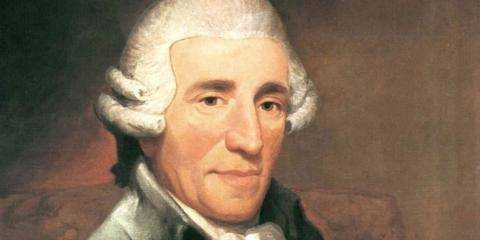MCO’s “Art of the Quartet” can be heard on Thursday 8 July 7:00pm AEST on Melbourne Digital Concert Hall via live stream and live in the studio audience at the Athenaeum Theatre, Melbourne; 9 July 7:00pm on Albert and Co Function Centre; and 10 July 3:00pm AEST on Mallacoota Golf Club.
JOSEPH HAYDN
String Quartet in B minor Op 33 No 1 Hob.III:37
I. Allegro moderato
II. Scherzo: Allegro di molto
III. Andante
IV. Finale. Presto
Joseph Haydn (1732-1809) was an extremely prolific and celebrated composer producing works across a wide range of instrumental and vocal genres. In discussing his chamber music, Georg Feder and James Webster – in Grove Music Online – wrote: “He is familiarly known as the ‘father of the symphony’ and could with greater justice be thus regarded for the string quartet; no other composer approaches his combination of productivity, quality and historical importance in these genres.”
The six string quartets Op 33 were composed in 1781 and premiered on Christmas Day of that year. They are dedicated to the Russian Grand Duke Paul (later Tsar Paul I).
The first of the set is in B minor, and is one of Haydn’s few string quartets in a minor key. The opening Allegro moderato is in sonata form and has the sense of moving between the minor and major keys. The second movement is the brief Scherzo: Allegro di molto with the trio in the major key. The Andante has the feel of a courtly dance with its long and elaborate melody, and the Presto Finale is filled with driving excitement and virtuosity.
2021 David Forrest
MALCOLM WILLIAMSON
String Quartet No 3 (1993)
Malcolm Williamson was one of the highest profile Australian composers of the twentieth century and was Master of the Queen’s Music from 1975 until his death in 2003 at the age of 71. He wrote his Third String Quartet in 1993 for the Australian String Quartet. The first performance was given in Birmingham in 1994 by the ASQ, led by its founder William Hennessy with rehearsal supervised by the composer. A second ASQ performance took place at the Adelaide Festival in the same year. The work is dedicated to the composer Elisabeth Lutyens.
The work lasts about ten minutes and is in one continuous movement. The principal theme starts with a strict tone row (all 12 notes of the scale being used prior to returning to any of them, a concept which dominated much of twentieth century music). Whilst the overall harmonic language is essentially atonal the character of the work is mostly lyrical with highly transparent textures. The result is something of a cross between Haydn’s crystal-clear classicism, the atonality and economic gesture of the second Viennese School, and Williamson’s own emotional complexity, which oscillates between the tender and the austere.
The emotional peak of the work arrives at a structurally typical classical point being about three quarters of the way through the piece. This is followed by two exquisite violin soliloquies, one from each of the quartet’s violinists, before the work comes to a serene close.
Whilst Williamson was based in London from 1953 he maintained that “Most of my music is Australian. Not the bush and the desert, but the brashness of the cities. The sort of brashness that makes Australians go through life pushing doors marked pull.”
2021 William Hennessy
LUDWIG VAN BEETHOVEN
String Quartet in F minor Op 95
I. Allegro con brio
II. Allegretto ma non troppo
III. Allegro assai vivace ma serioso
IV. Larghetto espressivo – Allegretto agitato
Ludwig van Beethoven (1770–1827) composed chamber music across a wide range of genres from instrumental solo sonatas, to trios, quartets, quintets and more in various combinations of instruments. His string quartets are among the most important pillars of the chamber music repertoire. They build on the works of Haydn and Mozart and are in many ways the point of reference to the future development of the genre.
Quartet no 11 in F minor was composed in Vienna over 1810 and 1811, and is dedicated to his friend Count Nikolaus Zmeskall von Domanovecz. First performed in 1814, the work was published in 1816 as Op 95. Beethoven wrote to the English musician Sir George Smart: “the quartet is written for a small circle of connoisseurs and is never to be performed in public.”
Given the title “Serioso” by the composer, it is one of his shortest quartets. It is packed with intensity and drive and we see the composer experimenting with a diverse range of ideas and techniques.
The opening Allegro con brio is brisk and abrupt and is contrasted with a melodic second theme that forms the basis of the movement in sonata form. The Allegretto ma non troppo displays contrast between the opening interweaving melody that merges into sections of contrapuntal writing. The fierce Allegro assai vivace ma serioso is balanced with two trio sections. The final movement is introduced by a melancholy Larghetto espressivo that is followed by the Allegretto agitato with its sudden and abrupt changes bringing the work to a dazzling conclusion.
© David Forrest 2021

